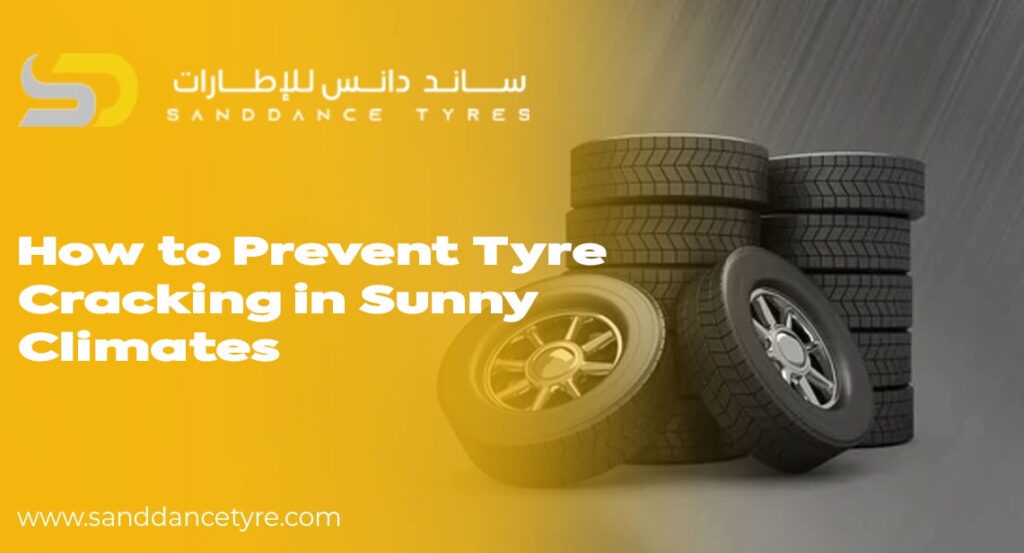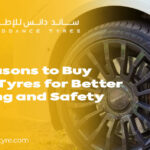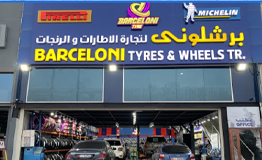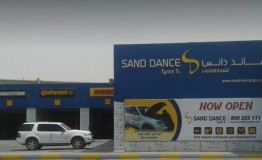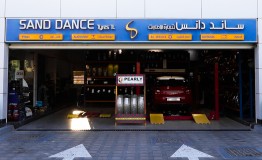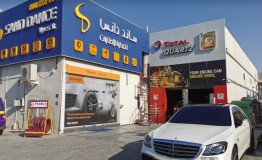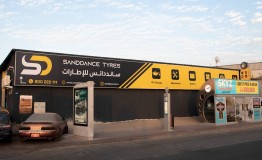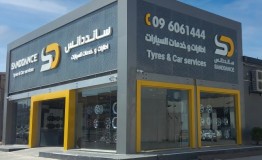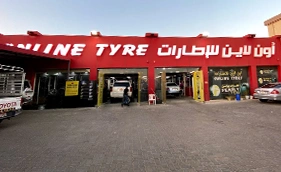Tyre cracking is an issue which is very much present and often ignored in hot and sunny regions like the UAE. While the heat may present a comfort issue for drivers, it also affects tyre health, which in turn affects safety. Cracks in tyre side walls or in the tread can lead to blowouts, poor handling, and also to the wearing out of the tyre faster. In this blog, we will look in detail at tyre cracking prevention in sunny climates, and we will also put forth simple maintenance tips which will help you to avoid expensive replacements or safety issues.
Read More: How Wet Grip Tyre Rating Impacts Safety in the UAE Rain
What Causes Leads to Tyre Cracking Prevention in Hot Climates.
Before we get into tyre cracking prevention, we must understand what causes tyre cracking, which is a significant issue in high-temperature environments. Tyres are made from rubber, which, over time, degrades naturally. When exposed to great heat and UV rays, this degradation is accelerated, which in turn causes the rubber to lose its elasticity and to develop tiny fissures. Here are the main causes of tyre cracking in sunny climates:
- UV exposure: Direct sun causes breakdown of the rubber’s oils, which in turn leads to dry rot and surface cracking.
- Extreme heat: Pavement that is hot increases internal pressure and causes faster material breakdown.
- Ozone pollution: In urban areas that have high ozone levels, tires also experience oxidation.
- Poor storage: Tyres that are left in the sun or which are stored improperly age faster.
Park in the Shade or Use Tyre Covers
One way to see your tires’ life extended is by reducing their time in the sun. Park in the shade when you can or in garages. Should you have no choice but to park outdoors, put in a UV-resistant tire cover. These covers act as a barrier to harmful rays and slow down the cracking.
Regularly Clean Your Tyres
Dust, sand, and chemical byproducts from roads may wear away at the tire’s finish over a time frame which is many years. Use water and a mild detergent for the task at hand. Don’t use strong chemicals or petroleum products, as they will remove the protection that natural oils supply for the rubber. In hot climate conditions, a once-per-month cleaning is sufficient to keep that rubber in tip-top shape.
Apply a Quality Tyre Protectant
Using UV-protected tire protectants is a great idea for the prevention of tire cracking. These products add back lost moisture to rubber and also create a protective layer against the sun. As for the choice of tire conditioner, get one that is based on silicone and which also has a UV protection label.
Maintain Proper Tyre Pressure
In very warm weather, we see great changes in tire pressure. Overinflation and underinflation also cause uneven wear and cracking. We recommend you use a digital pressure gauge weekly and also follow the manufacturer’s PSI recommendations. Also note that overinflated tires may experience more cracks in the side walls due to increased tension.
Rotate and Balance Your Tyres
Tyre rotation and balancing out, which in turn even out the wear of all tyres. What we see with uneven wear is that it puts stress on certain areas, which in turn increases the risk of cracks. As a general rule, we do well to rotate your tyres at the 8,000 to 10,000 km mark or as your vehicle manual recommends. For the most part, what we do for the tyre cracking prevention is to stick to a proper maintenance schedule.
Avoid Prolonged Inactivity
If your car has been standing for long periods , especially if it is outdoors, the tires will develop flat spots and dry out. It is a good practice to move the car around a little or take it out for a short drive every few days. That way, the rubber stays flexible and the pressure is distributed even.
Replace Tyres That Show Signs of Age
Even at good tread depth, tires which are over five to six years old should be checked. If you see cracks in the side wall, between the treads, or any sign of dry rot, it is time to think about replacing them. In sunny climates, tires age out faster than in cooler areas.
Final Thoughts
At Sand Dance Tyre, we are aware of the issues car owners face in the UAE heat. Whether you are a daily driver or only use your car seasonally, do not sacrifice your vehicle’s safety. With the proper care routine and preventive measures, tyre crack prevention is a simple and economic issue. We have expert staff that will do a tire check for you, recommend the best products, and we will help you to be safe on the road.
Frequently Asked Questions—FAQs
Which are the best products for tyre cracking in the UAE?
In the UAE, which has the best products for tire cracking, we see UV-resistant tire protectants, silicone-based conditioners and anti-ozonised sprays. At Sand Dance Tyre, we put forth only what the industry has to offer for the harshest of heat and sun conditions.
In what range of time should I check my tyre pressure in summer in Dubai?
In places that see high temperatures, like in Dubai, you should check your tire pressure weekly. Temperature changes, large and small, will affect PSI. Also, by doing regular checks, you prevent overinflation, which in turn will cause the tires to crack.
Do I have to replace my cracked tires, or can they be repaired?
Minor surface cracks may be fine, but when it comes to large or very visible cracks, that’s a different story, which is when the integrity of the rubber is in question. Also, in the great majority of cases, which is to say in most environments, but especially in hot climates, repair of a cracked tyre is not recommended, which is why we recommend a new tire.
Is it a widespread issue that all tyre brands are affected in hot climates?
Yes, I see that all tyre brands do get cracking in hot and sunny weather. Also, premium tyre brands do indeed put in advanced compounds, which in turn resist UV and heat for a longer time. At the same time, it is a fact that we must implement cracking prevention for all tyre brands regardless of which you choose.
Does shade parking help in tyre cracking prevention?
Yes, Tyres wear out mainly from the sun’s radiation. Shade parking is an easy yet very effective way to reduce tyre damage, which in turn improves tire wear and safety.


